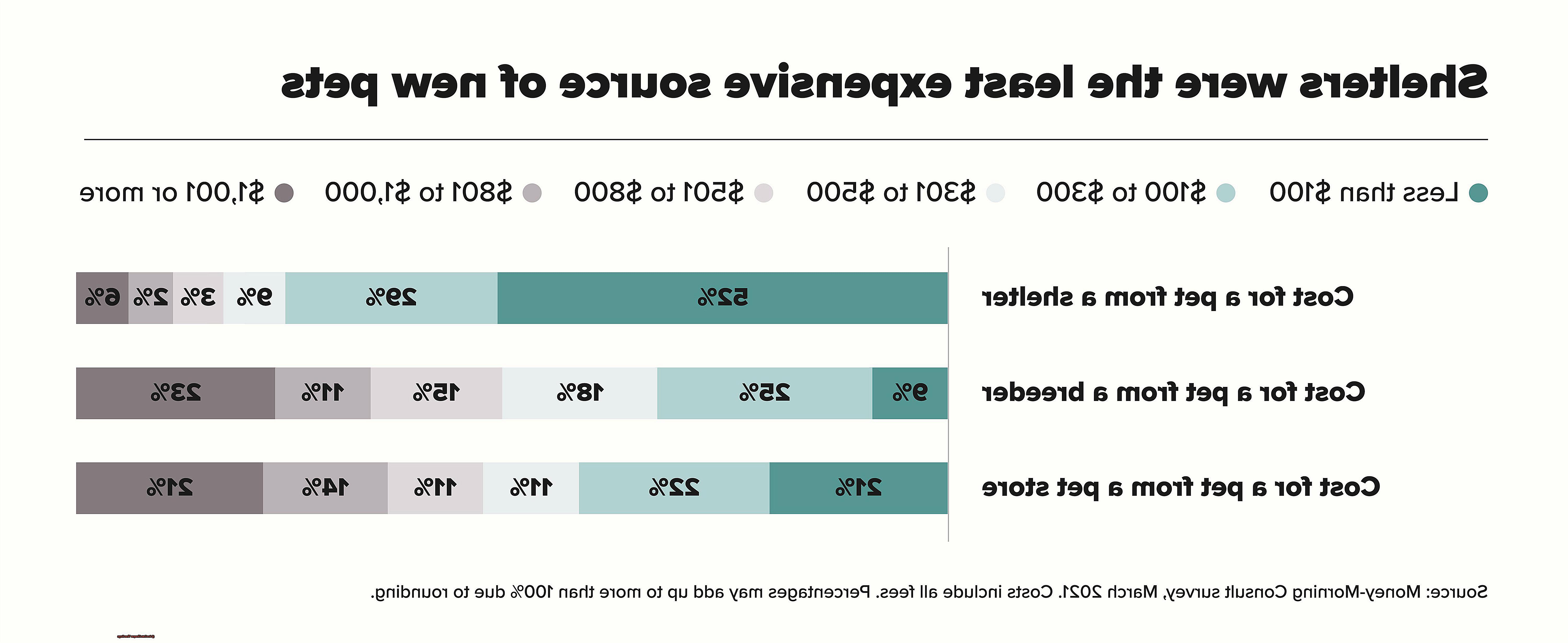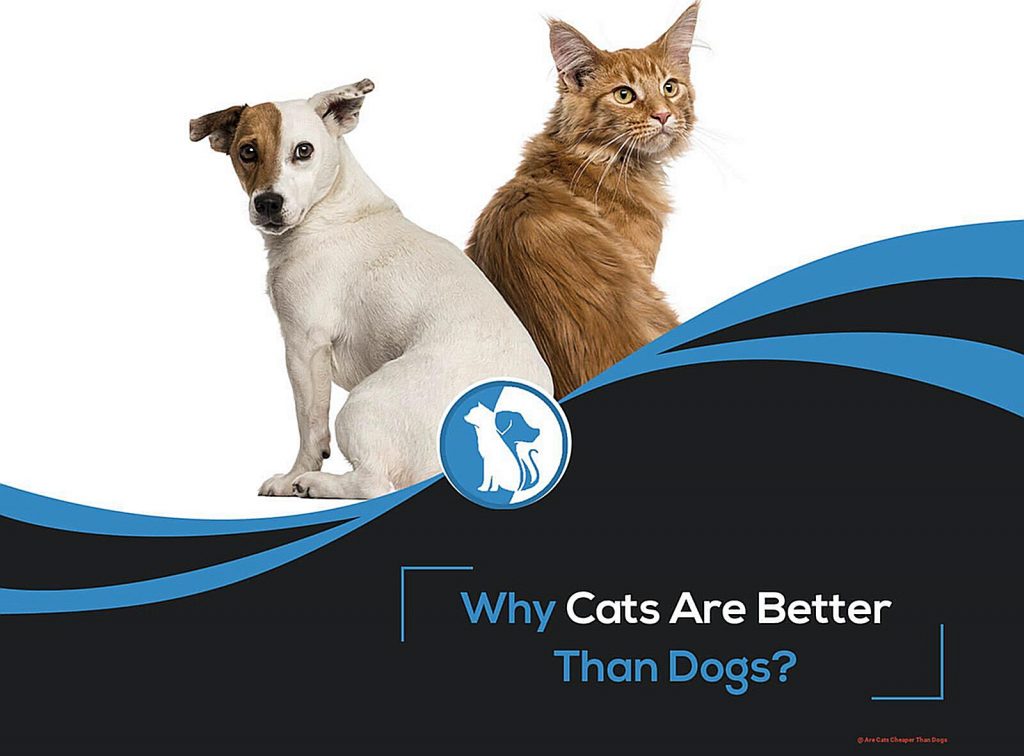Pets are the perfect addition to any home, bringing love, laughter, and endless joy.
And when it comes to choosing a furry companion, cats and dogs top the list for most people. But let’s be real – owning a pet can put a dent in your wallet.
So which one is easier on the bank account: cats or dogs? In this post, we’ll break down the costs of these popular pets and help you decide which one fits your budget best.
So, grab your fur baby and let’s dig into the world of pet expenses.
Are Cats Cheaper Than Dogs?
Contents
While all pets require financial responsibility, owning a cat can be more affordable compared to owning a dog. As an expert on the topic of pet ownership costs, I have done extensive research and have personal insights to share about why cats are the purr-fect choice for those looking for a furry friend on a budget.

Lower Average Cost of Ownership
According to the ASPCA, the average cost of owning a cat for one year is $809, while the average cost of owning a dog for one year is $1,270. This includes expenses such as food, basic medical care, and pet insurance. This shows that cats are generally cheaper to own than dogs. This is not surprising as cats require less maintenance compared to dogs.
Less Maintenance = Lower Costs
Unlike dogs, cats do not need to be walked or taken outside for bathroom breaks, which can save on costs associated with dog walking services or a fenced-in yard. Cats are also self-groomers, which means you won’t have to spend money on expensive grooming appointments like you would for a dog. This not only saves money but also time and effort.
Smaller Size = Less Food Expense
Cats are generally smaller in size than dogs, which means they require less food and therefore cost less to feed. The type of food also plays a role in cost – high-quality cat food tends to be cheaper than high-quality dog food. This means you can provide your cat with quality nutrition without breaking the bank.
Lower Medical Expenses
Medical expenses can also add up when owning a pet. However, cats are often less prone to health issues compared to dogs, which means fewer vet visits and lower medical bills. Additionally, spaying or neutering a cat is usually less expensive than doing so for a dog. Of course, this is not a guarantee, but on average, cats tend to have lower medical costs compared to dogs.
Initial Cost of Getting a Pet
It’s important to consider the initial cost of getting a pet as well. Purebred dogs can cost hundreds or even thousands of dollars, while cats can often be adopted from shelters for a much lower fee. This initial investment can significantly impact the overall cost of owning a pet. Adopting a cat not only saves you money but also gives a loving home to a furry friend in need.
Initial Expenses for Cats and Dogs
Are you thinking about adding a furry friend to your family? Congratulations. Pets bring so much love and joy into our lives, but it’s important to be aware of the initial expenses that come with adoption. As an expert on pet ownership costs, I’m here to provide you with a comprehensive breakdown of the potential costs associated with owning a cat or dog.
Breed, Age, and Location: Factors that Affect Initial Costs
The first thing to consider when it comes to initial expenses for cats and dogs is the breed, age, and location. Purebred cats and dogs can be significantly more expensive, with some breeds costing thousands of dollars. However, purebred cats tend to be less expensive than purebred dogs due to the demand and popularity of certain dog breeds. Additionally, older pets may have lower adoption fees compared to puppies and kittens. And location can also play a role in costs, as certain areas may have higher adoption fees or cost of living.
Adoption Fees: Giving a Fur-ever Home
Adopting a pet from a shelter is a great way to save money and give a loving home to a pet in need. The average cost of adopting a cat from a shelter is around $50-$150, while adopting a dog can cost anywhere from $100-$500. This is because dogs are usually larger and require more resources and care. However, keep in mind that adoption fees often include initial medical expenses such as vaccinations and spaying/neutering.
Spaying/Neutering: An Essential Expense for the Health of Your Pet
Speaking of spaying and neutering, this procedure is crucial for both cats and dogs. Not only does it prevent unwanted litters, but it also helps with behavioral issues and can prevent health problems later in life. On average, spaying or neutering a cat can cost around $50-$100, while for dogs it can range from $200-$500. While it may seem like a hefty expense upfront, it can save you money in the long run.
Long-Term Costs of Owning a Cat or Dog
Welcoming a new pet into your home is an exciting and fulfilling decision, but it’s important to be aware of the long-term costs that come with owning a cat or dog. While our furry friends bring endless joy and companionship, it’s crucial to consider the financial responsibilities that come with them. As an expert in the field, I’ll break down the various factors that can affect the long-term costs of owning a cat or dog.
Breed Matters: Cats vs. Dogs
When it comes to long-term costs, cats tend to be less expensive than dogs. According to a study by the ASPCA, the average cost of owning a dog for one year is between $737 and $1,448, while the cost of owning a cat for one year is between $526 and $1,17One of the main reasons for this difference is that cats do not require as much food as dogs. On average, a cat will eat around four ounces of food per day, while a dog can consume up to two cups of food per day.
Size and breed also play a significant role in cost differences between cats and dogs. Certain breeds of cats may require more expensive food or have health issues that can drive up expenses. For example, purebred cats are more prone to genetic health problems compared to mixed breeds. Similarly, larger dog breeds tend to have higher healthcare costs due to their size and potential health issues.
Location, Location, Location
Where you live can also impact the long-term costs of owning a pet. City dwellers may face higher housing costs, making it more expensive to accommodate a pet in their living space. Additionally, outdoor pets may require more frequent vet visits due to potential exposure to parasites or injuries.
Lifestyle Considerations
Your lifestyle also plays a significant role in determining the long-term costs of owning a pet. For example, if you have an active lifestyle and enjoy going on outdoor adventures with your dog, you may need to spend more on supplies such as leashes, harnesses, and protective gear. Similarly, outdoor pets may require additional vaccinations and flea/tick prevention treatments.
Size Matters: How Size Affects the Cost of Ownership
Are you considering adding a feline friend to your family? As a cat owner myself, I understand the excitement and anticipation that comes with bringing a furry companion into your home. However, it’s crucial to consider the financial responsibilities that come with pet ownership. One significant factor that can impact the cost of ownership is the size of your pet. In this section, I’ll dive into how size can affect expenses related to food and supplies, medical care, potential health issues and lifespan, living space requirements, and pet-proofing costs.
Food and Supplies
One of the most apparent differences between cats and dogs is their size. Cats are generally smaller in size compared to dogs, making them more affordable in terms of food and supplies. According to the American Society for the Prevention of Cruelty to Animals (ASPCA), the average cost of owning a cat is $670 per year, while the average cost of owning a dog is $875 per year. This difference can add up over time, making cats a more budget-friendly option for pet owners.
Medical Expenses
The size difference between cats and dogs also impacts their medical expenses. Smaller animals generally require less medication and treatment, resulting in lower medical bills. Cats are also less likely to develop health issues due to breeding or genetics, which can be costly to treat in dogs. However, it’s worth noting that the cost of ownership can vary depending on the breed of cat or dog. Some purebred cats may have higher maintenance costs due to specific health issues associated with their breed. On the other hand, mixed-breed dogs may have lower medical costs compared to purebred dogs due to their genetic diversity.
Potential Health Issues and Lifespan
The size and breed of an animal can also affect their lifespan, which can impact the overall cost of ownership. Smaller animals tend to have longer lifespans compared to larger ones, resulting in more long-term expenses for larger breeds. It’s crucial to consider the potential health issues and lifespan of a pet before making a decision based solely on their size. For example, while a smaller breed may have lower initial costs, they may have a shorter lifespan and require more medical care in their later years.
Independence vs. Attention: How Different Needs Impact Expenses
While there is some truth to this statement, it’s important to understand how your cat’s independence can still impact your expenses. Let’s dive into the topic of independence vs. attention and how it can affect your wallet.
Lower Expenses for Grooming and Training
One of the main reasons people choose cats over dogs is their independence. Unlike dogs, cats do not require regular grooming or training – a major expense for pet owners. This means you can save money on professional grooming services and training classes, which can add up over time.
Savings on Exercise and Entertainment
Cats are known for their laid-back nature and don’t require as much attention and exercise as dogs do. This can translate into savings on toys and other supplies to keep them entertained. While dogs may need constant playtime, cats are content with a laser pointer or scratching post, which are relatively inexpensive.
Daily Care Expenses Should Not Be Overlooked
While cats may not need as much attention as dogs, they still require daily care such as feeding, litter box cleaning, and regular vet check-ups. These expenses should not be overlooked and should be factored into your budget when considering getting a cat. Additionally, investing in quality food and litter can also add up in terms of expenses.
Potential Health Issues
Some argue that cats are more prone to health issues such as urinary tract infections, which can result in costly vet bills. This is something that should not be taken lightly when considering the expenses of owning a cat. On the other hand, larger dogs may require more expensive food and have a higher risk of developing joint or hip problems, resulting in costly treatments.
Consider Your Lifestyle and Budget
Ultimately, the decision between a cat or dog should not solely be based on expenses. It’s important to consider your lifestyle and budget when choosing a pet. While cats may have lower expenses in some areas, they still require love, attention, and proper care. On the other hand, dogs may have higher expenses but can bring a different type of joy and companionship to your life.
Breed-Specific Considerations for Cats and Dogs
Purebred vs. Mixed Breed: Is there a difference in cost?
First off, let’s address the elephant in the room – purebred vs. mixed breed cats. While purebred cats may come with a hefty price tag due to their specific bloodlines and breeding standards, they may also require specialized care or grooming, which can increase their overall cost. On the other hand, mixed breed cats tend to have fewer health issues and may be less expensive to care for in the long run.
Dietary Needs: One size does not fit all
Just like us humans, cats have different dietary needs depending on their breed. For example, Siamese cats are known to be more prone to developing urinary tract issues, requiring a specialized diet to prevent potential health complications. It’s essential to consider these dietary needs when budgeting for your cat’s food and supplements.
Size Matters: Bigger breeds, bigger expenses
It’s no secret that larger breeds of cats require more space and resources. This can translate into higher expenses when it comes to litter boxes, beds, and even toys. So if you’re considering getting a Maine Coon or a Ragdoll, be prepared to allocate a bigger budget for your feline friend.
Health Concerns: A potential financial burden
While all cat breeds are susceptible to certain health conditions, some breeds have a higher likelihood of developing them. For instance, Persians are prone to respiratory issues due to their flat faces, and Scottish Folds may develop joint problems due to their folded ears. These conditions may require extra medical attention and expenses, so it’s essential to be aware of your cat’s breed and potential health risks.
Individual Needs vs. General Costs
When it comes down to it, the individual needs of your cat should be the main consideration when determining the overall cost of care. While the average cost of owning a cat is relatively low compared to other pets, it’s crucial to look beyond this generalization and consider the specific needs of your feline friend.
Adoption Fees: Are Cats Cheaper Than Dogs?
And while the choice may ultimately come down to personal preference and lifestyle, one factor that may sway your decision is the adoption fee. It’s no secret that cats are generally considered lower maintenance than dogs, but does that mean they come with a lower price tag as well? Let’s dive into the world of adoption fees for cats and dogs and uncover the truth.
Location, Location, Location.
Just like real estate, location plays a significant role in the cost of adopting a cat or dog. In general, adoption fees for cats tend to be lower than those for dogs. This is because there are more cats in shelters and rescues than dogs, leading to a higher demand for cats and therefore lower fees. So if you’re on a budget, adopting a cat may be the way to go.
Organization Matters
The organization or shelter from which you adopt your furry friend can also impact the adoption fee. Some shelters may offer discounted fees for senior cats or cats with special needs, making them even more affordable. Other organizations may even waive or reduce adoption fees during special events or promotions. Keep an eye out for these opportunities to save on adoption fees.
What’s Included?
It’s important to consider what is included in the adoption fee when comparing costs between cats and dogs. On average, adoption fees for cats can range from $50-$150, while dog adoption fees can range from $100-$300. However, these fees often include spaying/neutering, initial vaccinations, and microchipping, which can add up to hundreds of dollars if done separately. Some shelters and rescues may also offer these services at a reduced cost or for free upon adoption of a cat or dog.
Breed-Specific Considerations
While it may be tempting to adopt a purebred cat or dog, it’s important to consider the potential cost. Purebred cats and dogs often come with higher adoption fees due to their popularity and demand. However, keep in mind that these breeds may also come with higher expenses for specialized care or potential health concerns.
Conclusion
In conclusion, it’s no secret that owning a pet comes with its fair share of expenses. But when it comes to choosing between cats and dogs, many may wonder which one is easier on the bank account. As an expert on pet ownership costs, I have delved into the world of pet expenses and can confidently say that cats are generally cheaper than dogs.
Through extensive research and personal insights, I have found that cats offer a more budget-friendly option for those looking for a furry friend. Their lower average cost of ownership, less maintenance, smaller size resulting in lower food expenses, and often lower medical expenses make them a more affordable choice compared to dogs.
Of course, individual needs and breed-specific considerations must also be taken into account when determining the overall cost of owning a cat or dog. Factors such as location, organization, and what is included in adoption fees can also play a role in comparing costs between these popular pets.
However, beyond just the financial aspect, it’s important to consider your lifestyle and budget when choosing a pet. Whichever furry companion you choose – whether it’s a frisky feline or a loyal canine – they will undoubtedly bring endless love and joy into your life.






